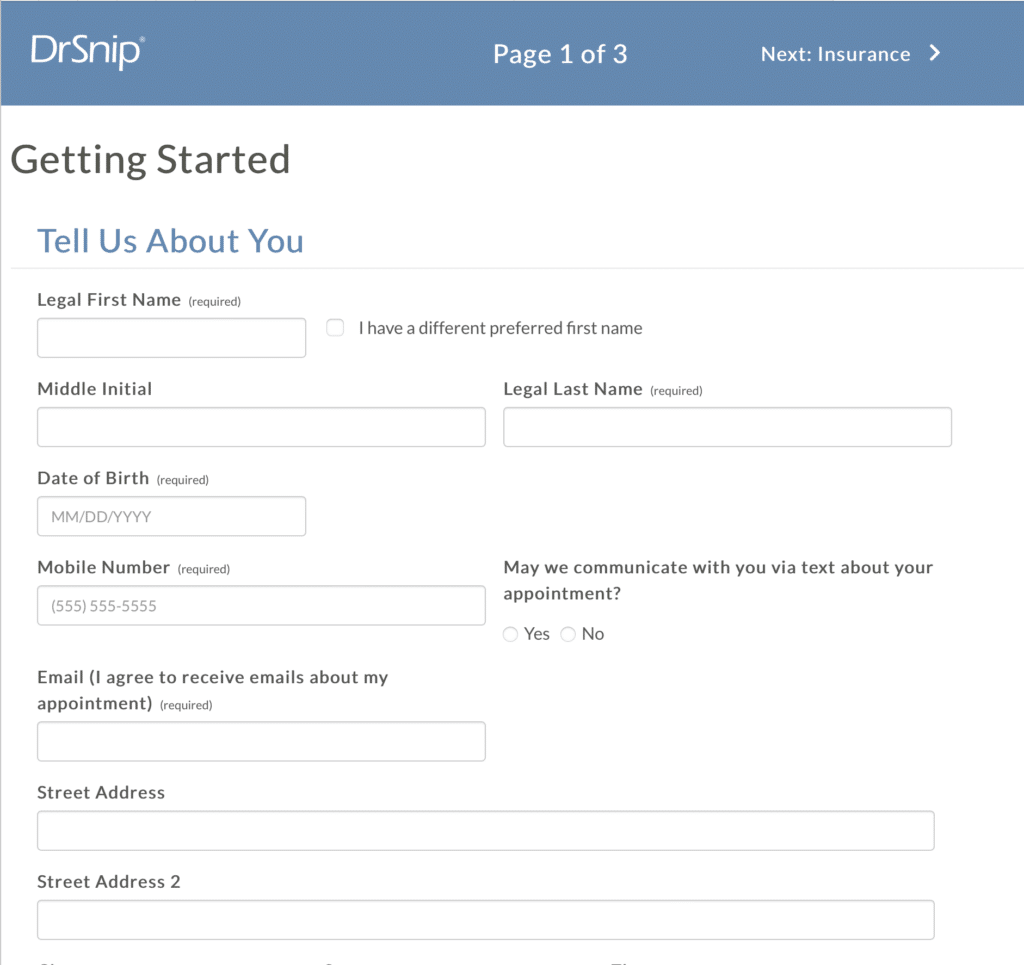Dr Snip / The Vasectomy Clinic in Seattle and Portland wanted a web-based application for new patients to provide information before their first appointment. We used FM BetterForms to rapidly design the front-end of the app while easily connecting directly to their FileMaker solution database via the FM Data API. This rapid application development saved significant planning and programming time without requiring the use of intermediately data storage, such as MySQL.
With any FileMaker-driven web application, it important to consider the kind of traffic expected for the site. Is a light load expected? Someone will fill out a form ten times a day for example. Or is a more heavy load expected? Fifteen people will click a button at the same time in a training environment.
Another important consideration is the mission criticality of the web application. Does the app have to be up 24/7 with essentially no down time, ever? This is rarely a bar that FileMaker applications have to be able to get over and if it applies to your web application then very careful consideration of your server environment is necessary. Alternatively, ways to fault-proof your web application should be strongly considered.
Scalability is a third consideration. Is the likely number of users of the app well known and defined? Or is the number unpredictable and you may have to rapidly scale up the capabilities of your server environment to meet unexpected loads?
In the case of our client, the web form wasn’t expect to have significant load, thus the reason we chose FM BetterForms.

Challenges
While most design can be easily be accomplished in FM BetterForm without needing JavaScript skills, the DrSnip app has sophisticated conditional data entry, validation, and multiple pages and did involve a fair amount of custom JavaScript, CSS, and HTML work.
Outcome
In the end, the data from the patient registration forms feeds directly into the DrSnip FileMaker database, eliminating a lot of duplicate data entry and improving their patient intake workflow significantly.
If we can help you increase the versatility and productivity of your Claris FileMaker solution by extending it into the world of standards-based web applications, please send me an email!
